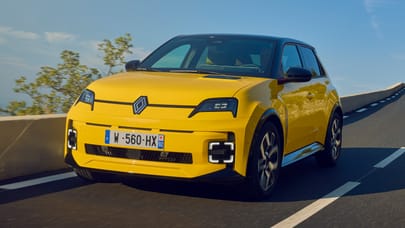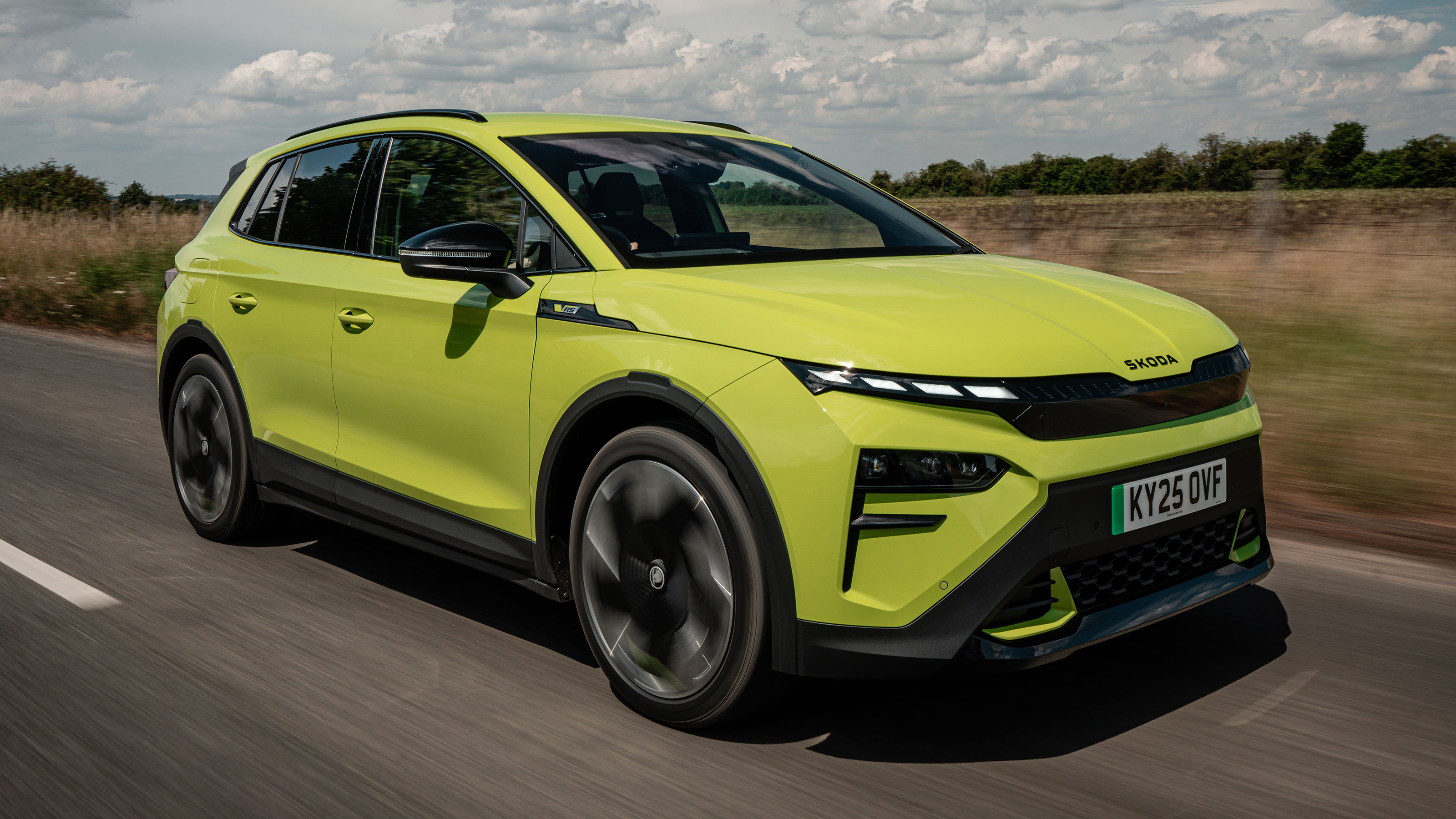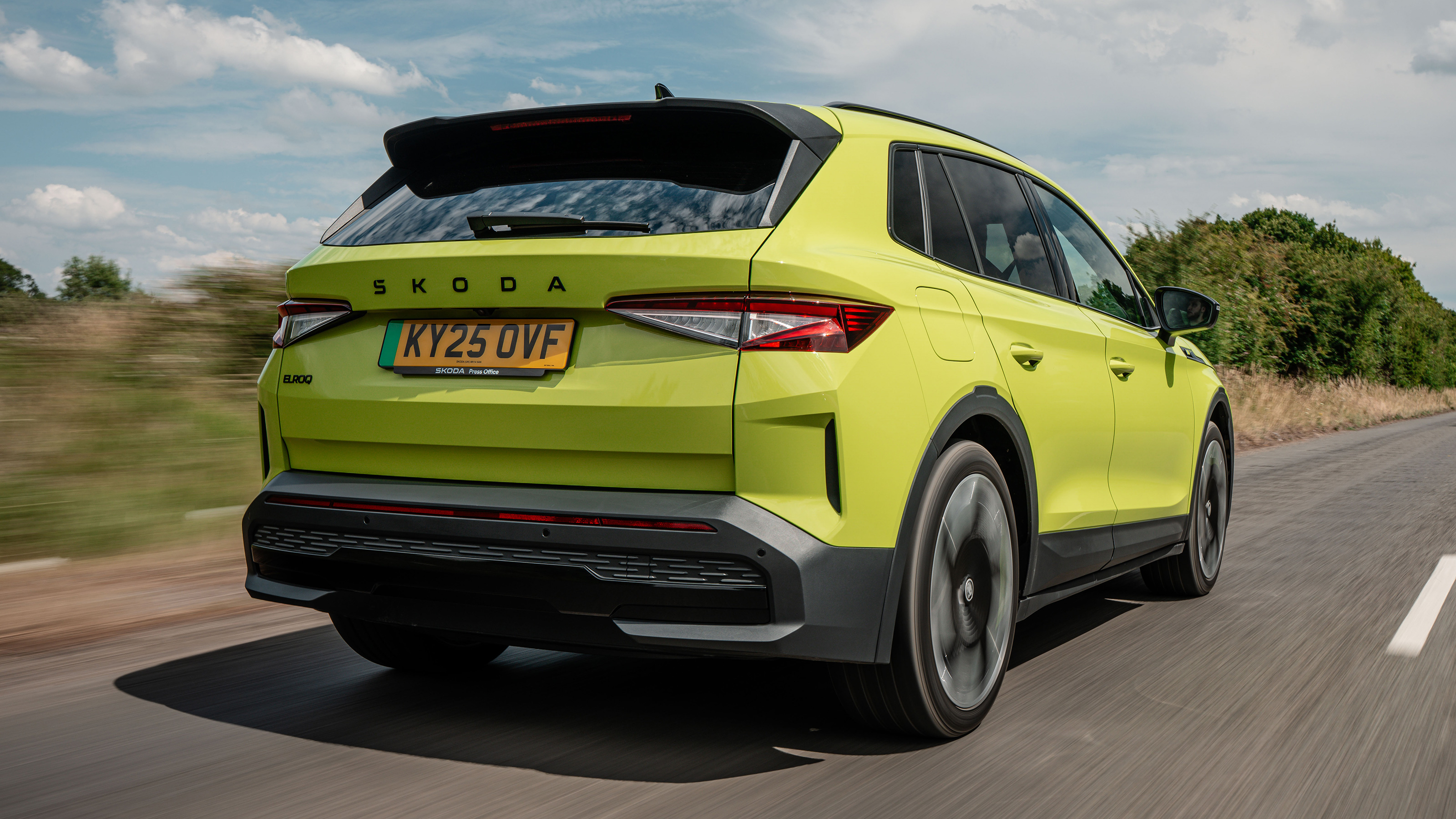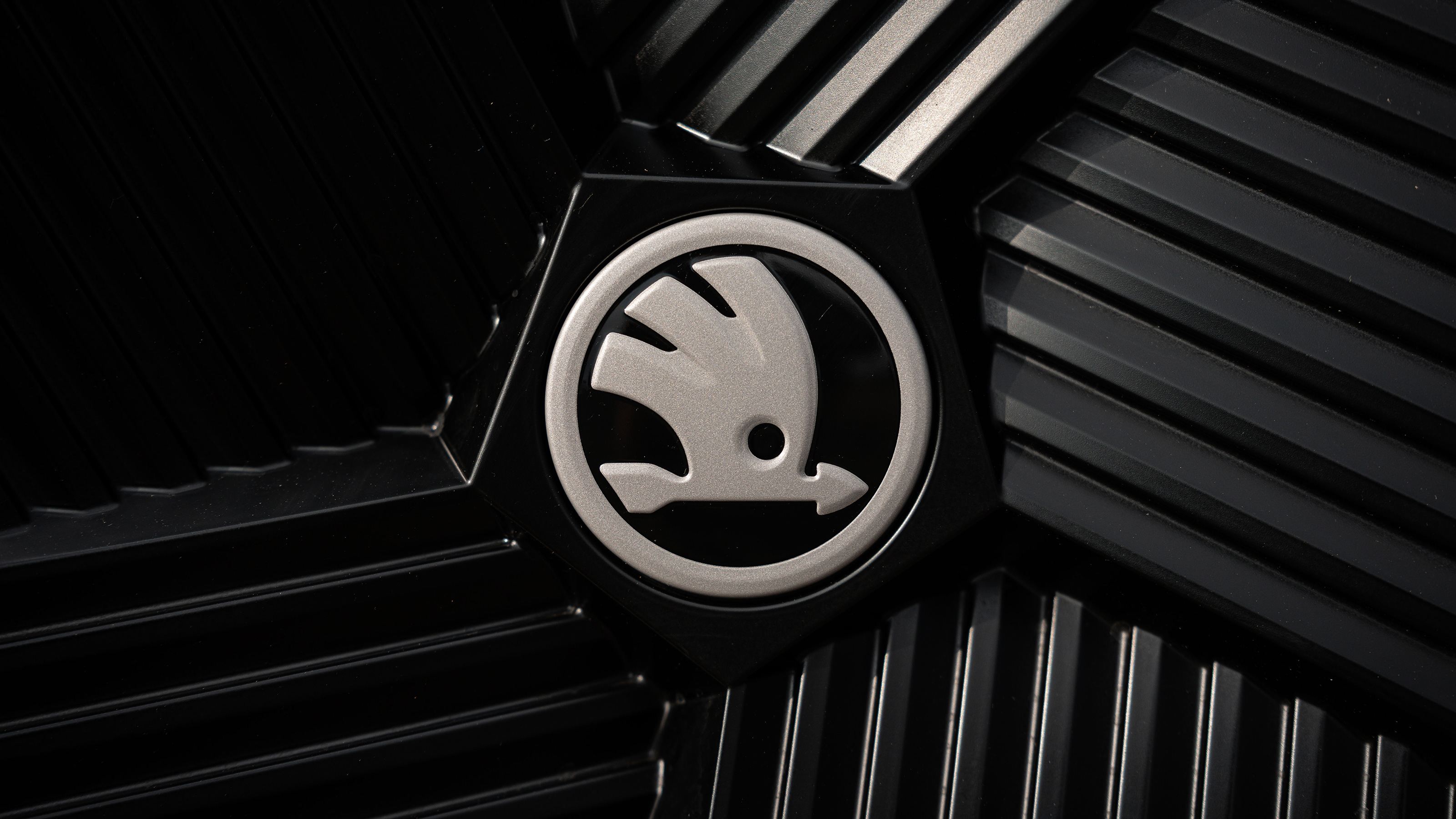
SPEC HIGHLIGHTS
- Range
(Combined)339 miles
- Battery
Capacity84kWh
- BHP
335.3bhp
- 0-62
5.4s
- CO2
0g/km
- Max Speed
111Mph
‘Rally history’? I’m expecting big things.
Don’t get too carried away. Skoda has a modest but admirable rally heritage, which began with the 200 RS of the Seventies and peaked with the 130 RS that followed it a few years later.
That car won its class at the Monte Carlo Rally in 1977 and the European Touring Car Championship in 1981, and those remain the two biggest prizes in the Czech brand’s trophy cabinet. It probably doesn’t spend much on polish, is what we're saying.
Anyway, that success later inspired some road-going stuff, like the original Octavia vRS in 2001 and the cult hero Fabia vRS diesel in 2003. Today you can get your hands on a vRS version of the current Mk4 Octavia, and Skoda started to really push its luck with a vRS-badged Enyaq a few years ago. To save you a click… we didn’t like it.
No one actually knows where vRS comes from – even Skoda isn’t sure – but the little ‘v’ is unique to the UK, and legend has it that’s because Skoda wanted to avoid a legal ding dong with Ford over the RS moniker it uses on the other side of the Channel. It stands for ‘Victory Rally Sport’. Which is snappier than ‘Occasional Winners Rally Sport’.
Enough background, why am I looking at an Elroq?
Ah, well, Skoda has decided the vRS badge could and should be used more liberally, which explains the existence of a Kodiaq vRS (!) with the heart of a Golf GTI. But especially so in the electric sphere, where emotion and heritage aren’t as easy to come by.
So as well as doubling down on an updated Enyaq vRS as part of that car’s recent facelift, there’s also a vRS model of the new Elroq crossover as well. Ta da!
Like its marginally longer, older sibling, the Elroq vRS follows the same sort of blueprint: lowered ‘sports’ chassis (10mm at the front and 15mm at the rear), DCC dampers with 15 stages of adjustment, and more power. Lots more power.
How many extra steeds are we talking?
Well the regular Elroq starts off with a 168bhp motor mounted at the rear and swells to 281bhp as you walk up to the top-spec model. This Elroq has two motors for all-wheel drive. So total shove amounts to 335bhp and 402lb ft. And that makes this the joint fastest-accelerating Skoda ever made.
No need to guess your next question. From a standing start the Elroq vRS will hit 62mph in 5.4 seconds, an identical time to the Enyaq vRS. It’ll top out at 111mph.
For a small crossover designed to ferry youngsters between piano recitals, judo and the dentist, it’s rather nifty.
Is that really who it’s for? Parental taxi duty?
Well this is the thing. The audience for a heftily motivated, electric mini SUV isn’t going to be high, and Skoda only expects it to account for about five per cent of Elroq sales.
Top Gear
Newsletter
Thank you for subscribing to our newsletter. Look out for your regular round-up of news, reviews and offers in your inbox.
Get all the latest news, reviews and exclusives, direct to your inbox.
You’d have to really want the extra lavishings that come on the kit list, and for the family business to be booming. Because it costs £46,560.
What?! That’s GR Yaris money!
Yep. And that’s before you’ve added the heat pump (£1,100) and winter package (£600) with its heated seats front and back, heated windscreen and three-zone climate control. Our test car came to £48,260.
Good god.
Rather steep isn’t it? We know the cheapest cars struggle to get under twenty grand these days and that electric power still comes at a premium. But it’s nearly fifty thousand pounds sterling. That’s a deposit on a nice house. Or a month’s rent in Clapham.
Does it get platinum alloys and a hydraulic handbrake fashioned from ivory?
In a rare win for the elephants, no. But Skoda has thrown almost everything in its inventory at the Elroq vRS, fitting it out with gloss black trim, roof rails, badging and window frames; bespoke ‘sports’ bumpers, an illuminated ‘Tech Deck’ face, matrix ‘eyelash’ LEDs (Skoda’s words, not ours), 21s and the option of the Hyper Green paint you see up there. High vis has never looked this cool.
Inside you get a heated, three-spoke leather steering wheel, some lovely microsuede upholstery and lime green stitching, plus comfy sports seats with massage function and a Canton sound system. The pedals are upgraded to stainless steel, so primed for a lifetime of heavy stomping.
The driver’s display is a five-inch digital number and the touchscreen is a 13-incher – VW Group’s tech isn’t so bad these days, and there’s some vRS-specific graphics in addition to an HUD with augmented reality. It’s properly nice in here. As you’d damn well expect for the money involved.
That’s a lot of kit for a relatively small car.
Yeah, the best way to think of the vRS is as a trim level. A troublingly expensive, but nonetheless stacked, trim level. And if you’ve got the cash to play with, you’ll be getting a well-styled car that’s nice to spend time in. Hard to fault on that front.
The mistake is to take the rallying schtick too seriously. Because if you’re looking for an heir to the R5, you’re going to be unimpressed.
A total let-down, then?
Like I said, it depends on your expectations. The Elroq vRS has tremendous point-and-squirt ability, with blitzy acceleration rather than the kind that’ll pinball your internal organs around.
It’s fluid and flowy, but not particularly lively through corners. All very safe and neutral, with a tendency to understeer. Just what you’d expect from all-wheel drive. And not what you’d hope for given the inspiration behind it.
The ride is fine, but it’s a bit more agitated than the vRS-ified Enyaq. A consequence of being more compact? The softest suspension setting is precious little different to the firmest one 14 clicks to the right. Nor is the supposedly fettled steering that different in character.
So… how do I have fun in this thing?
With the regen. You get four different levels of braking force, adjustable via the paddles behind the steering wheel. On a twisty road the challenge is gauging how much retardation you’ll need before a corner in order to nail the weight transfer and make the wheels grip up. All while hanging onto as much momentum as possible. It’s satisfying, if not thrilling.
The brakes themselves are good too, soft enough to make urban stuff easy but giving good feel under heavier usage.
Bet that tanks the range…
You know what, even with gratuitous amounts of braking (purely for testing purposes, you understand) we averaged 3.5 mi/kWh over a mix of fast country roads and village roads in mid-Wales. Baking hot day helped too. Given the 84kWh battery (79kWh usable), that shakes out at roughly 275 miles of range against a claim of 339. You could do a lot worse.
Should I go for it?
What, buy one you mean?
Yeah.
Hmm. At that price the Elroq vRS is a real over-indulgence; a double choc chip ‘n’ cookie dough sundae with extra cream, warm salted caramel topping and honeycomb wafer. Served in crystal glassware. By a gentleman in tails. Called Jeeves. And you’d probably be just as happy with a simple sticky toffee pudding. Sorry, it’s getting late as we write this and peckishness is building.
There aren’t really many rivals for the vRS – Mini does the Aceman JCW but that’s a bit smaller. And just a worse car. Maybe a Cupra Born VZ? That’s more hatch-y but way better to drive and less money. And just look at the (dinkier) Renault 4: not a motorsport reference in sight but leagues more fun to drive than this. And two thirds of the price.
No, the vRS is for people who’ve already decided on an Elroq – a fine car in its own right – and gone ‘Sod it, I’ll treat myself to the quick one’. Once in a blue moon they’ll enjoy a quick hoon along an empty road, and the rest of the time they’ll be happy petting the microsuede dash like it’s an emotional support animal.
Nout wrong with that. But if it’s engagement you’re after, the Elroq vRS isn’t where you’ll find it.
Featured







